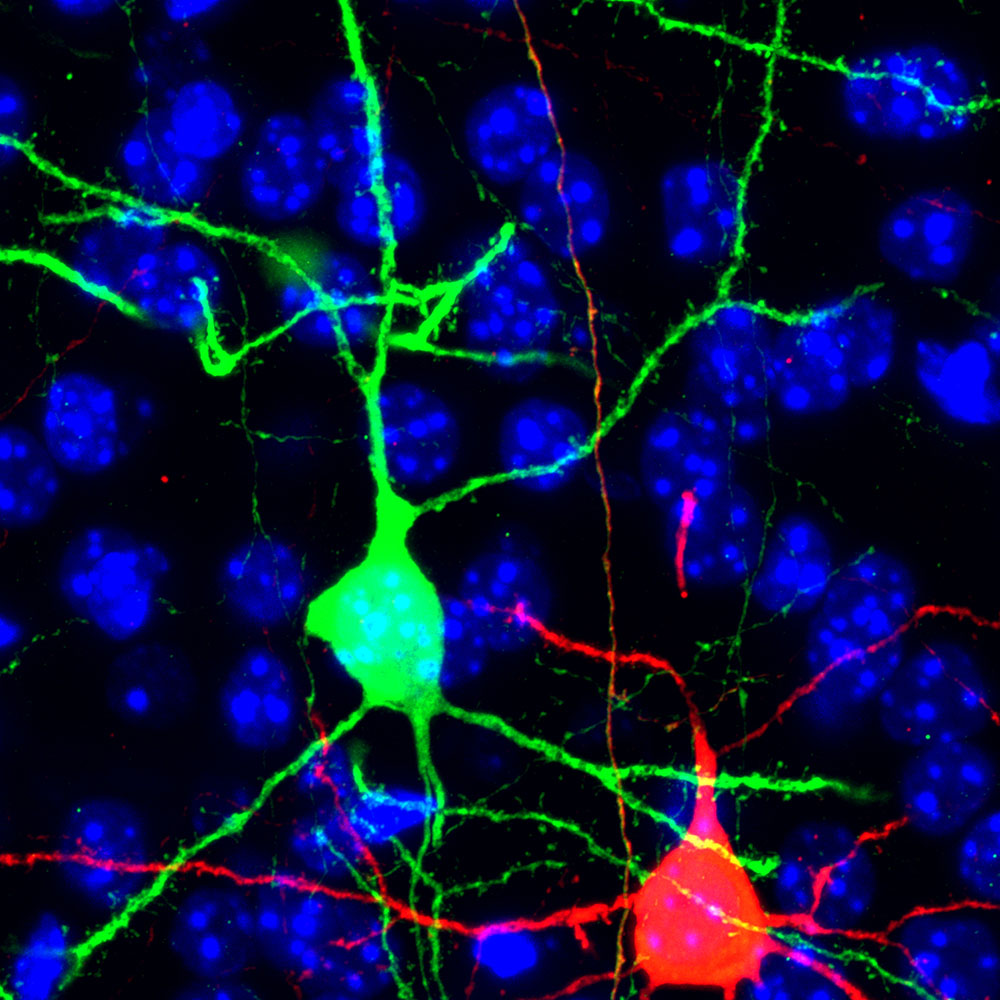January 10, 2020
New function for potential tumor suppressor in brain development
Analysis of Cdkn1c loss at single cell level reveals novel and unexpected role of gene – Study published in Nature Communications

The gene Cdkn1c could have been considered an open-and-shut case: Mice in which the gene is removed are larger and have bigger brains, so Cdkn1c should function to inhibit growth. This rationale has led to Cdkn1c being studied as a tumour suppressor gene. New research from the group of Simon Hippenmeyer, professor at the Institute of Science and Technology Austria (IST Austria), has now uncovered a novel, opposite role for Cdkn1c. When Cdkn1c is removed only in certain cells of the brain, these cells die, arguing for a new growth promoting role of Cdkn1c. The new research is published today in the journal Nature Communications.
Simon Hippenmeyer and his research group, including co-first authors Susanne Laukoter (PhD student), Robert Beattie (postdoc) and Florian Pauler (senior technical assistant), removed Cdkn1c in a brain region called the cerebral cortex in mice and found a surprising result: Contrary to what had previously been thought, the cortex was smaller, not bigger, than in animals with a normal amount of Cdkn1c. To make sense of this seeming paradox, the researchers compared the effect of Cdkn1c loss in the whole animal with a loss of the gene in just a single tissue or even in single cells in the developing mouse.
Studying brain development and gene function at single cell level with MADM
Using a genetic technique called Mosaic Analysis with Double Markers (MADM) allowed the researchers to knockout a gene of interest in single cells and at the same time, visualize the effect of gene deletion on these cells under the microscope. When they removed the gene Cdkn1c in cells in the whole cortex, the cortex was smaller. “When we take out the gene, cells die. In fact, we see massive death by apoptosis”, Hippenmeyer explains.
In a cortex where Cdkn1c was removed, the researchers further modified single cells with MADM to observe their fate. They found that if a cell has two intact copies of Cdkn1c, the cell is protected against death. If a cell has just one intact copy of Cdkn1c, the cell dies. Intriguingly, it does not matter whether the DNA, the “instruction manual” in our cells that defines how products like proteins are made, is active and thus allows generation of proteins, or not. Just having two copies of the intact DNA, the intact instruction manual, is enough to protect a cell from death.
Implications for studies on brain malformations and tumour development
For Hippenmeyer, this study underlines the importance of studying both systemic effects of gene loss (i.e. gene loss in the whole animal) and the effect of gene loss in individual cells. “Our method reveals a new function of Cdkn1c, as taking the gene out in a single cell has a fundamentally different effect from taking it out in the whole animal. Systemic effects may mask the effect observed in individual cells. It is important to also study this in human conditions that lead to malformations of the brain, such as microcephaly.”
As Cdkn1c and its role in the development of tumours has been studied extensively, the new research likely also has important implications for this field, says Florian Pauler. “There has been interest in Cdkn1c as it has been regarded as a tumour suppressor. Like the single cells and individual tissue we studied, tumours can also be seen as non-systemic. So, our findings change the way we should think about Cdkn1c, also in tumours.”
In the future, Hippenmeyer and his research group will continue to explore the mechanisms and functions of Cdkn1c. “When this piece of DNA is missing, something fundamental is changed and death is triggered in a cell. Of course, we want to now know why and how this happens”, Hippenmeyer asserts.
Publication
Susanne Laukoter, Robert Beattie, Florian M. Pauler, Nicole Amberg, Keiichi I. Nakayama & Simon Hippenmeyer. 2020. Imprinted Cdkn1c genomic locus cell-autonomously promotes cell survival in cerebral cortex development. Nature Communications. DOI: 10.1038/s41467-019-14077-2
Funding information
This project received funding from the Austrian Science Fund (FWF), the European Research Council under the European Union’s Horizon 2020 research and innovation program (grant agreement no 725780) and the NÖ Forschung und Bildung n[f + b] (C13-002).
Animal welfare
Understanding how the brain stores and processes information is only possible by studying the brains of animals while they carry out specific behaviours. No other methods, such as in vitro or in silico models, can serve as alternatives. The animals were raised, kept and treated according to the strict regulations of Austrian law.



